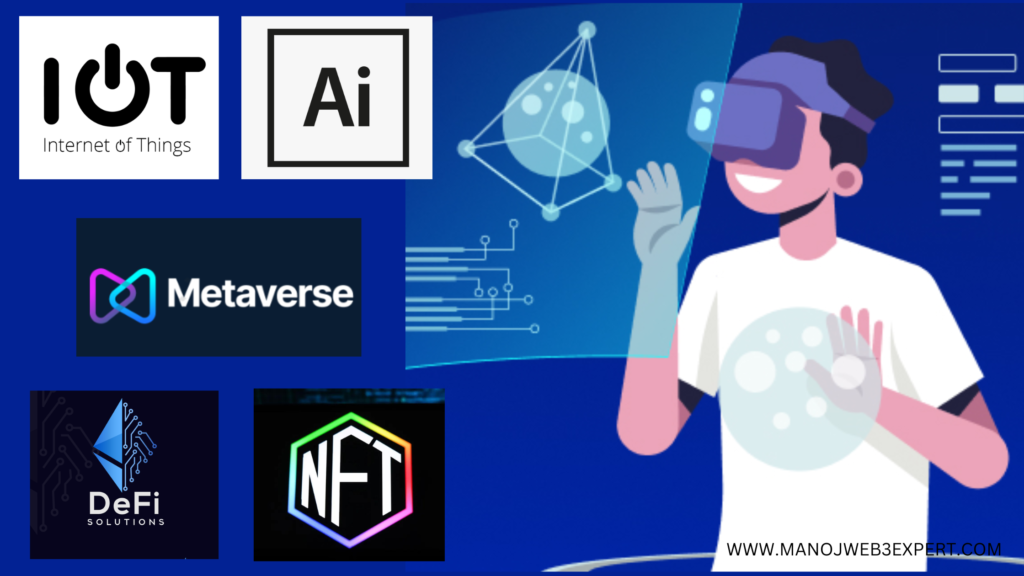The internet has changed the way we live, work, and interact with one another. It has brought us closer together, opened up new opportunities, and democratized access to information. But the internet as we know it today is far from perfect. It is centralized, prone to censorship, and dominated by a handful of large corporations. This has led to growing concerns about privacy, security, and the concentration of power. However, a new wave of innovation is set to change all that. Web3 is the next evolution of the internet, and it has the potential to transform the world in ways we can scarcely imagine.
What is Web3?
Web3 is a term used to describe the next generation of the internet, which is based on decentralized technologies such as blockchain and peer-to-peer networks. It is a fundamentally different approach to the internet, one that prioritizes privacy, security, and user control. In Web3, users own their data and control how it is shared, stored, and used. They can interact with one another directly, without the need for intermediaries or centralized platforms.
At the heart of Web3 is the concept of decentralization. This means that instead of relying on a single point of control, like a central server or a large corporation, Web3 applications run on a network of computers that are spread out across the world. This makes them more resilient to censorship, hacking, and other forms of attack, as there is no single point of failure. It also makes them more democratic, as anyone can participate in the network and contribute to its development.
How Will Web3 Change the World?
Web3 has the potential to transform the world in a number of ways. Here are just a few examples:
1. Democratization of Finance
One of the most exciting applications of Web3 is in the area of finance. Traditional finance is dominated by large institutions that control the flow of money and dictate the terms of transactions. This has led to a number of problems, including high fees, slow transaction times, and limited access for marginalized communities.
Web3 changes all that by enabling peer-to-peer transactions that are fast, cheap, and accessible to everyone. Decentralized finance (DeFi) platforms like Uniswap, Aave, and Compound allow anyone to lend, borrow, and trade assets without the need for intermediaries. This is a powerful democratizing force, as it gives people more control over their finances and reduces the power of centralized institutions.
2. Empowerment of Content Creators
The current internet is dominated by a handful of large platforms that control the flow of information and dictate the terms of content creation. This has led to a number of problems, including censorship, algorithmic bias, and limited opportunities for creators.
Web3 changes all that by enabling content creators to own and monetize their work directly. Platforms like Mirror, SuperRare, and Foundation allow artists, writers, and musicians to create and sell their work on decentralized marketplaces. This gives creators more control over their work and allows them to earn a fairer share of the profits.
3. Enhanced Privacy and Security
One of the biggest problems with the current internet is the lack of privacy and security. Our personal data is constantly being collected, analyzed, and sold by large corporations, and we have little control over how it is used. This has led to growing concerns about surveillance, hacking, and identity theft.
Web3 changes all that by putting users in control of their data. Decentralized identity platforms like uPort and Sovrin allow users to create and manage their own digital identities, without the need for centralized authorities. This gives users more control over their personal data and reduces the risk of identity theft.
4. Increased Transparency and Accountability
Another problem with the current internet is the lack of transparency and accountability. Large corporations have enormous power over the flow of information and the rules that govern online behavior. This has led to concerns about censorship, bias, and the abuse of power.
Web3 changes all that by enabling greater transparency and accountability. Blockchain technology, which underpins many Web3 applications, is a public ledger that records every transaction on the network. This creates a high degree of transparency and accountability, as anyone can view the records and verify the authenticity of transactions.
Additionally, Web3 applications can be designed to operate on a decentralized governance model, where decisions are made by the community rather than a centralized authority. This gives users a greater say in how the network is governed and reduces the risk of abuse of power by centralized authorities.
5. New Business Models and Opportunities
Web3 is also creating new business models and opportunities that were previously impossible. For example, decentralized marketplaces like OpenSea and Rarible allow anyone to buy and sell digital assets, including artwork, music, and even virtual real estate. This opens up new opportunities for creators and collectors, as well as investors looking for new asset classes.
Web3 is also enabling new business models based on tokenization. Tokens are digital assets that can represent ownership in a company, access to a platform, or even a share of revenue. These tokens can be traded on decentralized exchanges, creating new opportunities for fundraising and investment.
Challenges for Web3 Adoption

Despite the potential benefits of Web3, there are still challenges that must be overcome for widespread adoption. Some of the main challenges include:
- Technical Complexity
Web3 technologies can be complex and difficult to understand for the average user. This can create a barrier to adoption, as users may be hesitant to engage with platforms they don’t fully understand.
- Lack of Interoperability
Many Web3 platforms are built on different protocols and standards, which can create interoperability issues. This means that users may need to hold multiple wallets and tokens to participate in different networks, which can be confusing and inconvenient.
- Regulatory Uncertainty
The decentralized nature of Web3 platforms can create regulatory uncertainty, as they may not fit neatly into existing legal frameworks. This can create challenges for developers and investors, who may be hesitant to engage with platforms that are not fully compliant with existing laws and regulations.
- Limited Scalability
Web3 platforms are still in the early stages of development, and many are not yet able to handle the same level of traffic and transactions as centralized platforms. This can create issues with scalability, as platforms may struggle to keep up with demand as they grow.
Conclusion
Web3 is the next evolution of the internet, and it has the potential to transform the world in ways we can scarcely imagine. By enabling decentralized technologies like blockchain and peer-to-peer networks, Web3 prioritizes privacy, security, and user control. It democratizes finance, empowers content creators, enhances privacy and security, increases transparency and accountability, and creates new business models and opportunities.
However, there are still challenges that must be overcome for widespread adoption. Technical complexity, lack of interoperability, regulatory uncertainty, and limited scalability are just a few of the issues that must be addressed. But despite these challenges, the potential benefits of Web3 are too great to ignore. As the internet continues to evolve, we can expect to see Web3 play an increasingly important role in shaping the future of the digital world. Learn More Tech Blog techcrunch , openai , AI
